One of the best things that you can do for your health is to start swapping foods in your kitchen that trigger inflammation with anti-inflammatory foods. Our clients who want to lose weight or who have joint pain are excited and pleasantly surprised when they trade out inflammatory foods for those that are good for their anti-inflammatory diet. They quickly see weight loss results and less joint pain. Then they admit that they probably don’t really know what inflammation really is. We get it! We both remember our early days of playing soccer and our science-minded dad explaining why our ankles would swell if we sprained them thanks to “acute” inflammation that helps to protect and heal the body after an injury or infection. Seeing a swollen ankle initially freaked us out, but after our dad’s explanation we soon thought about inflammation as nothing to fear and an important part of the healing process, improving blood flow to the injury and bringing damage-fighting white blood cells to the area. In those days, the inflammation story ended there for us. Now, as registered dietitians, inflammation and anti-inflammatory are buzz words that have taken on a whole new meaning.
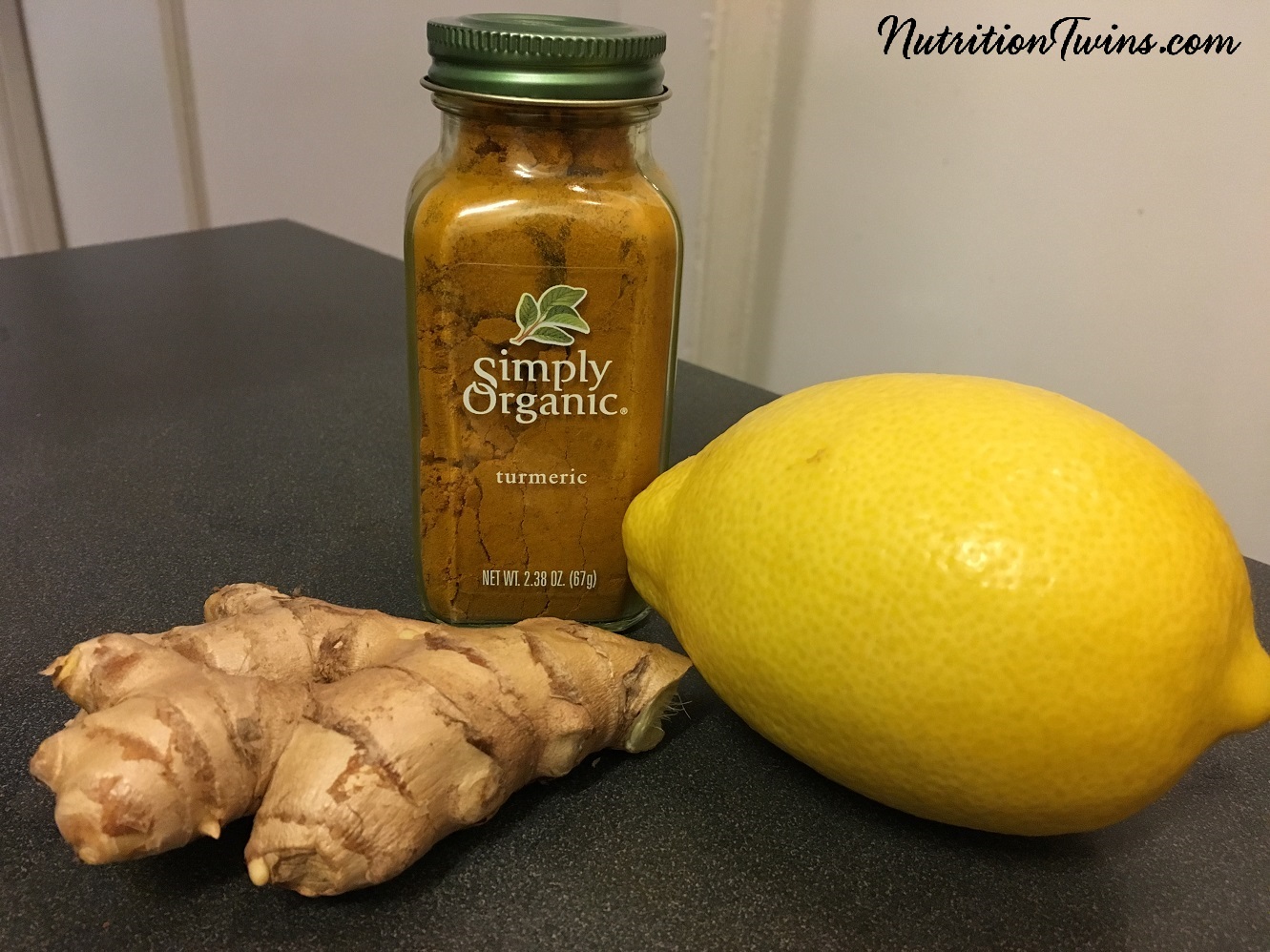
The inflammation that’s making major headlines today typically refers to ongoing inflammation that can result in long-term harm to the body rather than the beneficial, initial response to trauma inflammation that heals ankle sprains and other immediate injuries. This type of chronic or systemic inflammation can pose a real threat to long-term health and can also contribute to conditions like cancer, heart disease, diabetes, arthritis, or even Alzheimer’s disease. But fear not. With a few dietary tweaks, a lifestyle that once fed chronic inflammation can turn into one that heals it. And it doesn’t have to be boring. We’d never do that to you! You can include tasty, satisfying foods that leave you feeling anything but deprived.
The first step to turning your body into a well-tuned, inflammation-fighting machine is to become aware of the foods that cause inflammation and then try to keep them out of your kitchen or swap them out for better alternatives. This is one of the very first things we help our clients to do when we start working with them. Our weight loss hopefuls are always excited when they effortlessly shed a few unwanted pounds and realize how effective making these easy swaps is. To see results, simply substitute some of these inflammatory culprits for the better foods that fight inflammation.
Inflammatory Foods- Limit these or swap ‘em out
– Sugar and refined carbohydrates

- Cakes, cookies, pastries
- Added sugars found in processed foods, cereals, sodas
- Grains made with white flour including white bread, pasta and bagels
Too much sugar signals your body to send out cytokines, little immunity messengers which create inflammation in our bodies. Think of sugary foods and refined carbohydrates as an indulgence. If our clients buy these foods, they store them in the back of the cupboard so they’re out of sight, which makes it easier to consume them in limited amounts.
– Fried foods

- French fries, onion rings, deep-fried dishes like tempura or “crispy” restaurant foods
- Donuts, churros and other fried desserts
Aim to indulge only occasionally or share with friends (this way there will be no leftovers to bring into your anti-inflammatory kitchen).
– Animal fats
- Fatty cuts of beef, pork and lamb
- High-fat dairy products
A daily pat of butter or a serving of full-fat yogurt in a diet that contains primarily anti-inflammatory foods isn’t problematic; however, in the typical American diet that is already inflammatory, it contributes to even more inflammation. The message is not to let these foods dominate your diet. Think of them more as a condiment and use them wisely.
Twin Tip: If you have a food that you love, like bacon, take a slice, chop it, and add it to your healthy meal–such as chopped on a salad or in eggs, rather than having a full meal of the bacon.
– Trans fats

- It’s important to read ingredient labels and steer clear of hydrogenated and partially hydrogenated oils even if the label is marked as “0 trans fats”. If there is partially hydrogenated oil, a trace is there, and even that can cause inflammation
- Crackers, baked goods, frozen pizzas, cookies, and stick margarines often have trans fats
Artificial trans fats are known for their inflammatory properties. They’ve been shown to decrease HDL, increase LDL and they’ve been linked to higher levels of C-reactive protein, another inflammatory marker.
– Omega- 6 oils
- Seeds and vegetable oils such as corn, sunflower, safflower, soy and vegetables
- Mayonnaise, salad dressings and other sauces
- Cut back on processed and fast foods to reduce your own omega-6 to o-3 ratio and choose olive, flaxseed and avocado oils over other vegetable oils.
While the body needs omega- 6 fatty acids for overall health and development, too much omega-6’s trigger the body to produce pro-inflammatory chemicals. We need a healthy balance of omega- 6’s and omega- 3’s. The current ratio in the US diet is estimated at 16-to-1 omega 6’s to omega 3’s, instead of the ideal 4-to-1 or lower balance. Check out your cooking oil collection and work to upgrade to anti-inflammatory oils. Check out your cooking oil collection and work to upgrade to anti-inflammatory oils.
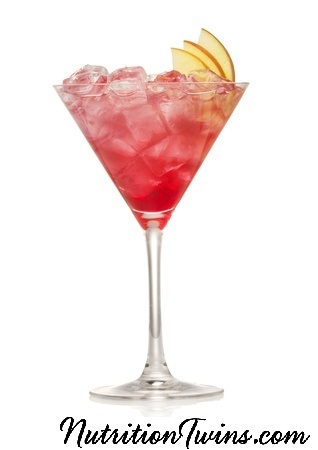
– Excessive drinking
Stick to one drink a day if you’re a woman; one to two drinks a day if you‘re a man.
1 drink is considered 5 oz of wine; 12 oz of beer or 1.5 oz of distilled spirits
Twin Tip: Make sure that at least every other drink is non-alcoholic and calorie free, like seltzer. You’ll consume a lot less alcohol over the course of the night.
6 Easy Swaps to Fight Inflammation in your Kitchen:
- Fruits, fresh or frozen. Make sure you keep your kitchen stocked with fruits that are easily available and ready to eat. Keep a fruit bowl on your kitchen counter and keep melons, pineapples and harder to cut fruits already cubed and ready to go in a bowl in your fridge.
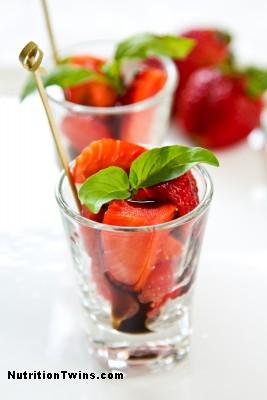
Be careful with dried fruits or fruit juices as they are also concentrated sweets, so best to keep in more limited amounts.
- Fruits contain beneficial antioxidants that mop up damaging free radicals that wreak havoc on our cells and cause inflammation
- Choose a wide variety of fruits rich in colors as each color represents a different health-promoting and anti-inflammatory phytonutrient
- All fruits reduce TNF-alpha, a marker of inflammation
- Brightly colored fruits like berries and cherries contain anthocyanins, known to be anti-inflammatory powerhouses
Twin Tip: Follow our Red, Green and Orange rule: Have at least one of these color foods on your plate coming from produce at every meal. You’ll score anti-inflammatory points.
Try out these recipes:
- Easy Berry Stuffed Egg Crepes (225 calories, 20 grams protein)
- Blueberry Banana Smoothie (177 calories, 15 grams protein)
- Cherry & Pistachio Sweet Potato Medley (130 calories, 6 grams protein)
- Veggies
Like fruits, consume a wide variety and lean towards the deep colors. Veggie phytochemicals are superstars packed with vitamins and minerals that combat inflammation. Keep local, organic, colorful veggies stocked up and at eye level in your fridge so that you are easily tempted by these anti-inflammatory powerhouses.
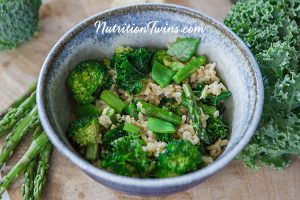
- Kale, Brussels sprouts, broccoli and other cruciferous vegetables are rich in sulfur and go through two detox phases in the liver, fueling the body to create more enzymes that both cleanse and reduce the toxic, inflammation-producing load.
- Stack sandwiches with spinach and tomatoes; use lettuce or kale for wraps and toss bell peppers, red onions and other veggies into omelets.
- Aim to make at least half of your plate veggies at every meal
Try these recipes:
- Kale Salad with Roasted Delicata Squash & Wild Blueberries with Wild Blueberry Vinaigrette
- Beet & Apple “Detox” Salad
- Kale Recharge Smoothie
- Lemon Summer Squash Zucchini/ Linguini
- Roasted Tarragon Garlic Sweet Potato Fries
- Guacamole Stuffed Tomato Poppers
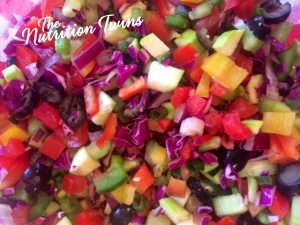
- Nuts and Seeds
Research has shown that nuts reduce markers of inflammation and lower the risk of heart disease and diabetes. Store a variety of nuts and seeds in air-tight containers in your pantry for up to 3 months or in your refrigerator or freezer if you buy in bulk or want to store these crunchy disease fighters for 6 months or longer. Our houses tend to be quite warm, so we typically store our nuts in the refrigerator to prevent them from oxidizing (we want to protect the antioxidants from becoming pro-oxidants and creating damage).
- Walnuts are highest in anti-inflammatory omega-3s and their polyphenols also help to reduce inflammation.
- Chia seeds contain alpha-linolenic acid, a type of omega-3s in plant foods that fight inflammation.
- Pumpkin seeds, ground flax seeds and hemp seeds are an excellent addition to your morning oatmeal or can be sprinkled onto your salad
- Nut butters can make great additions to a meal and lower your risk for inflammation
Nuts and seeds are excellent agents to fight the battle of inflammation. Just remember to eat these in moderation. About a handful of nuts a day or a Tbsp of your favorite chia seeds added to breakfast will go a long way. These are very healthy, but like any fats also have a higher concentrated energy value, so eating a cup at a time will not serve you well if you are watching your waistline too.
Twin Tip: If you have nuts for a snack, measure them out in advance and store them in small containers or zip-loc bags so you can grab them on-the-go and the portion is already determined so you won’t overindulge.
Try these recipes:
- Fresh Figs & Feta with Toasted Walnuts
- Strawberry Banana Chia Pudding
- Pears with Walnuts & Goat Cheese
- Spinach Berry Balsamic Grilled Chicken Salad with Raspberry Chia Vinaigrette
- Spices
Turmeric, ginger, garlic and cinnamon, just to name a few… A great addition to any anti-inflammatory kitchen is a round stainless steel Indian spice box, also known as Masala Dhabba (they look like this:
- Turmeric is a marigold root. Its active ingredient, curcumin is beneficial in fighting inflammation and even helps ease symptoms of inflammatory diseases like irritable bowel syndrome (IBS) and Crohn’s Disease. It also is a natural antioxidant known to protect against aging
- Turmeric can be added into smoothies, soups and rice dishes and complements with a delicious flavor as well as beautiful golden hue
- Ginger has shown to reduce inflammation after exercise as well as decrease joint pain in chronic inflammatory conditions like rheumatoid and osteoarthritis
- Garlic has been used for centuries and has organosulfur compounds that can make a bee line to your blood to decrease the substances causing inflammation
- Cinnamon has anti-inflammatory properties that can fight infection and repair tissue damage
Try these recipes:
- 5-Minute Turmeric Golden Milk
- Lemon Ginger Turmeric “Detox” Tea
- Grapefruit Ginger Mint “Detox” Drink
- Fatty fish
Remember how skewed the ratio of Omega-6 to Omega-3 is in the typical American diet? Fish contains the most omega-3 fatty acids, associated with lower levels of inflammation- eicosapentaenoic acid (EPA), docosahexaenoic acid (DHA), and alpha-linolenic acid (ALA), an essential fatty acid because your body doesn’t make it, so it’s important to get through your diet. Keep canned salmon, tuna, sardines, and other canned fish in your pantry; unlike fresh fish, they typically are good for at least a year after the purchased date. Keep canned salmon, tuna, sardines, and other canned fish in your pantry; unlike fresh fish, they typically are good for at least a year after the purchased date.
- Salmon, tuna, sardines, herring and white fish
- Eat at least 1-2 servings of fatty fish a week
Twin Tip: Keep a lemon on hand as it can revolutionize any canned fish and add more anti-inflammatory benefits.
Try these recipes:
- Salmon with Pineapple Salsa
- Beginner Sardine & Kalamata Chickpea Salad
- Soy Ginger Salmon
- Spicy Tuna Tacos
- Tea
Many of our favorite teas have been around for centuries and used medicinally. The herbs, spices and plants used are known to prevent oxidative damage and reduce the awful effects of inflammation. Remember that serving and drinking tea is a tradition that’s been around for thousands of years in many cultures. A great investment for your own medicinal garden of health is a beautiful tea set and tray for the full aesthetic experience. Stock your pantry with various varieties so you can keep things interesting!
- Tea contains polyphenolic compounds called catechins, which are ultra-strong antioxidants, rockstars in fighting inflammation
- Aim for 3-4 cups a day for maximum benefits, as research suggests.
- Green tea, tulsi (holy basil), rosehip and fennel are just a few anti-inflammatory helpers
Try these recipes:
To get our FREE Guide To Get The Body You Want Even While Eating Pasta click here!
References:
https://www.fammed.wisc.edu/files/webfm-uploads/documents/outreach/im/handout_ai_diet_patient.pdf
https://www.health.harvard.edu/staying-healthy/foods-that-fight-inflammation
https://www.healthline.com/nutrition/13-anti-inflammatory-foods

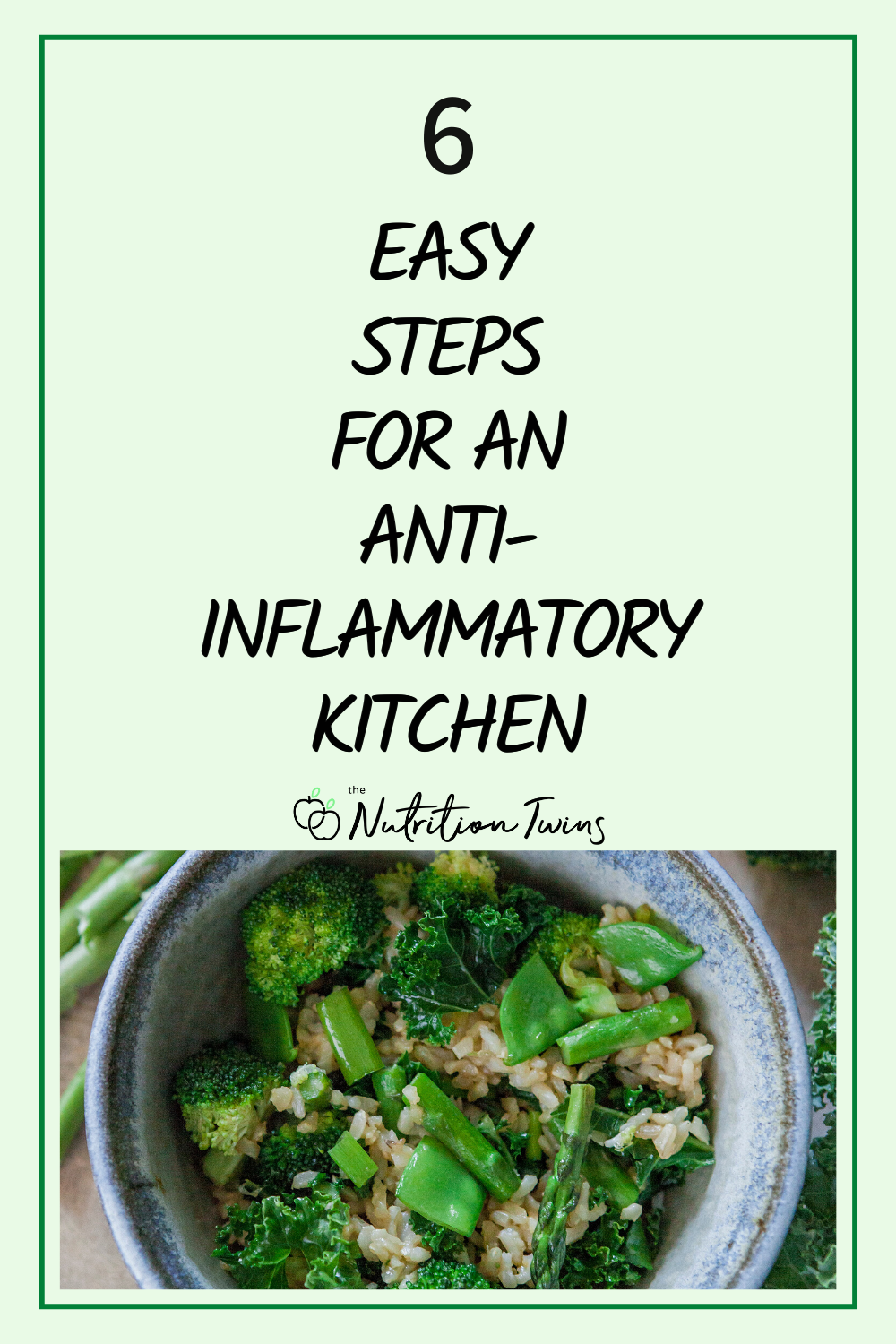
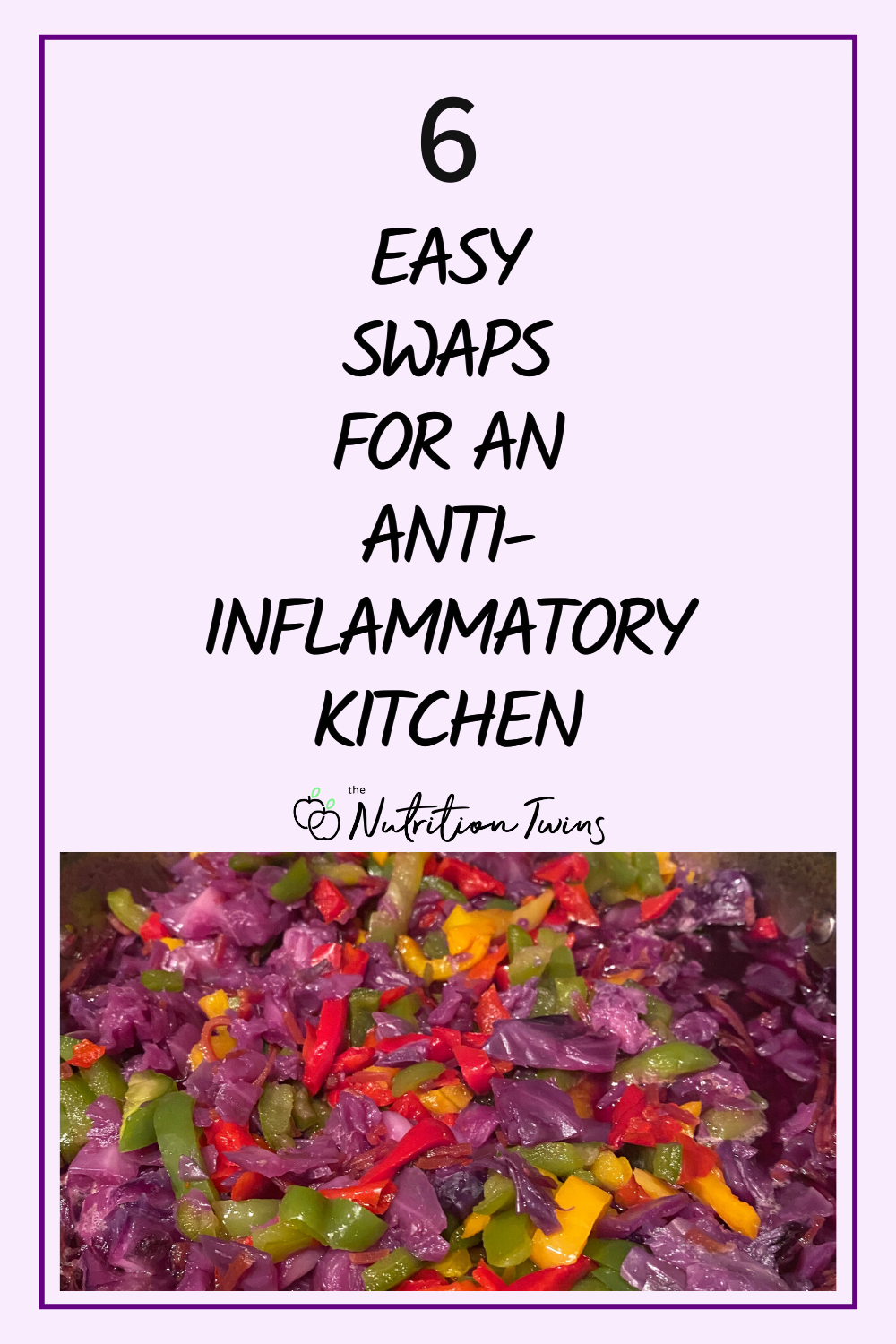

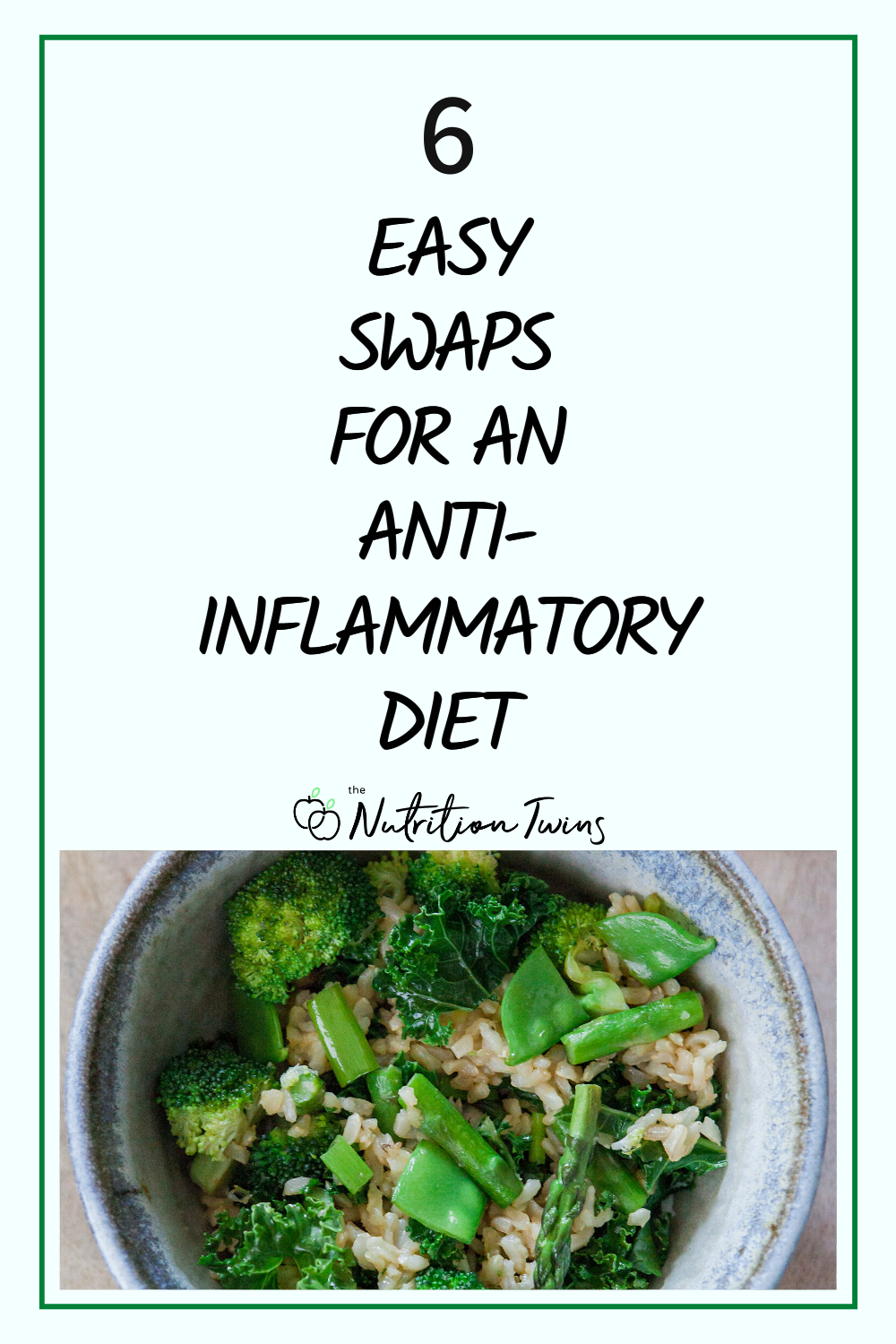
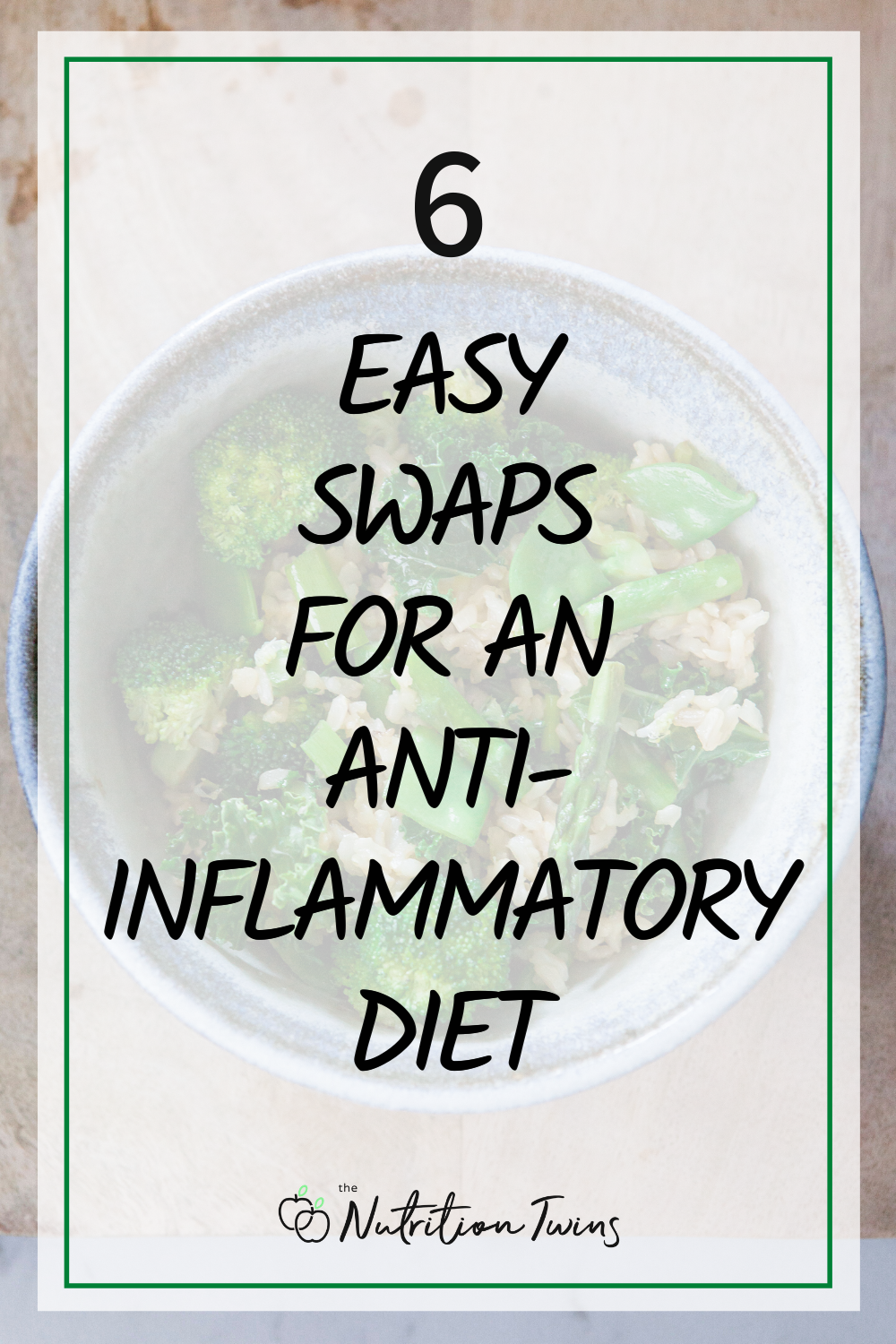
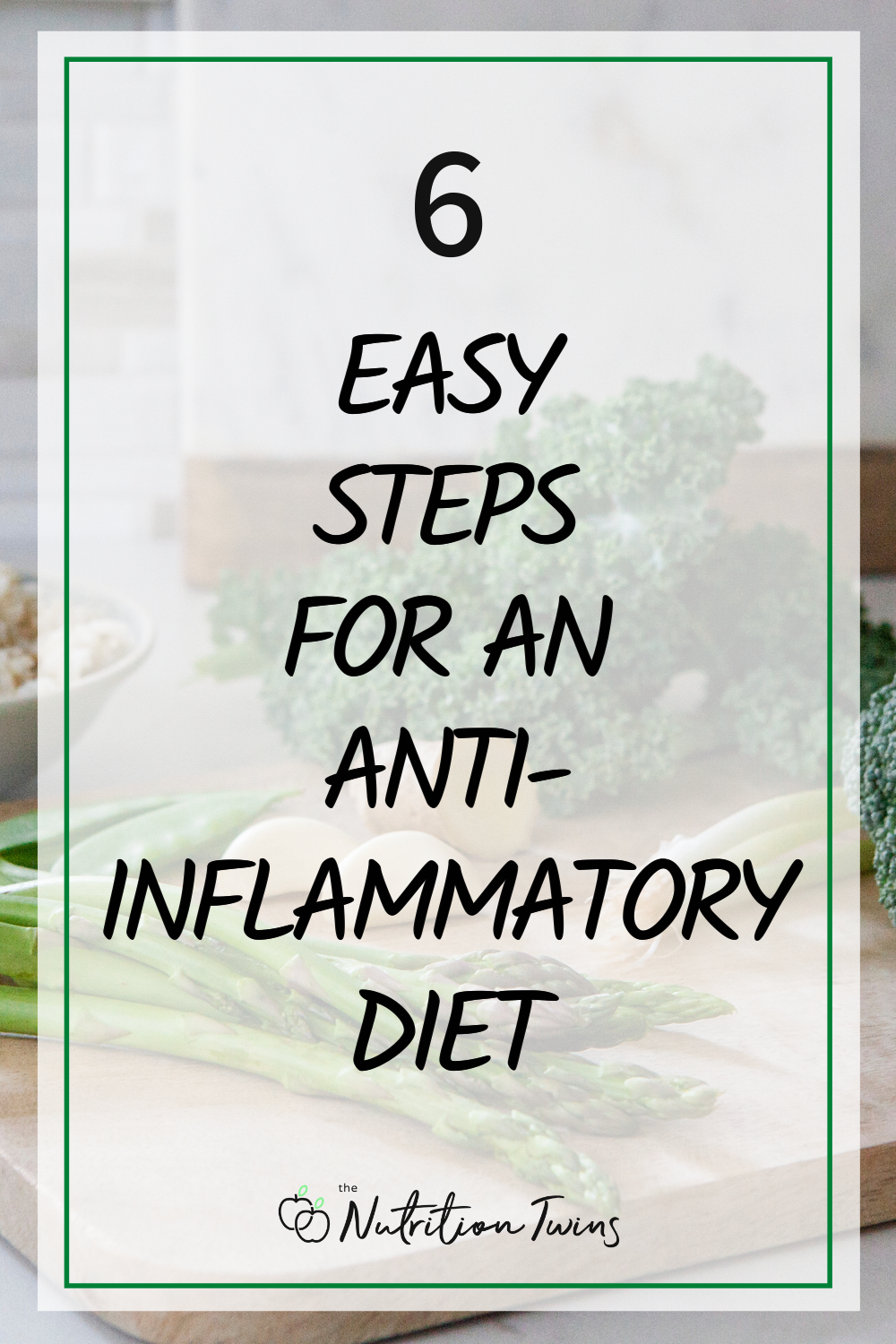





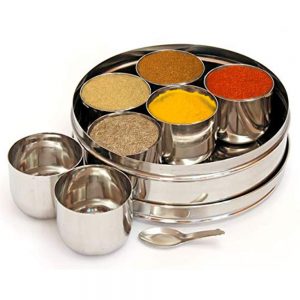
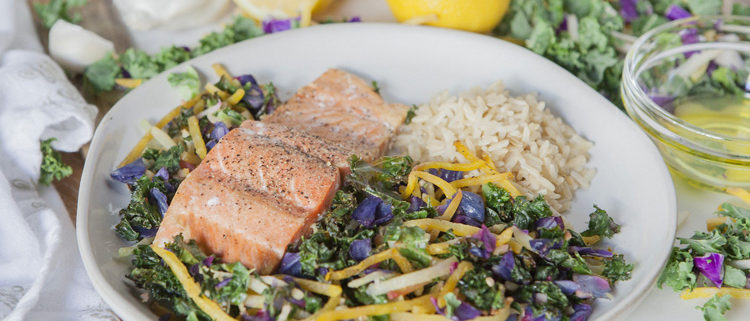

Inflamation is a real pain. I have been trying to control it with probiotic supplements for my family but diet changes are also important. Thank you for the amazing content!